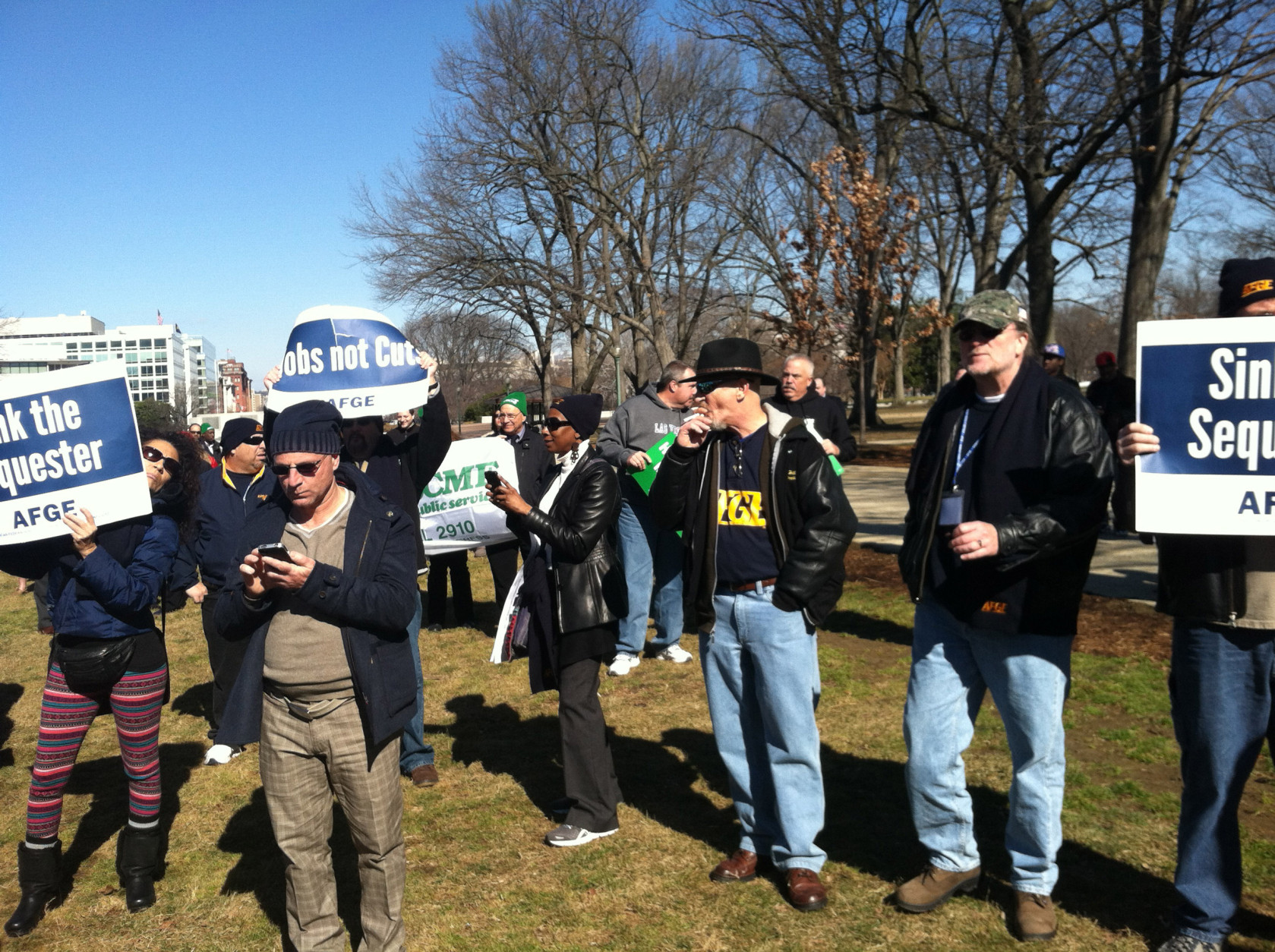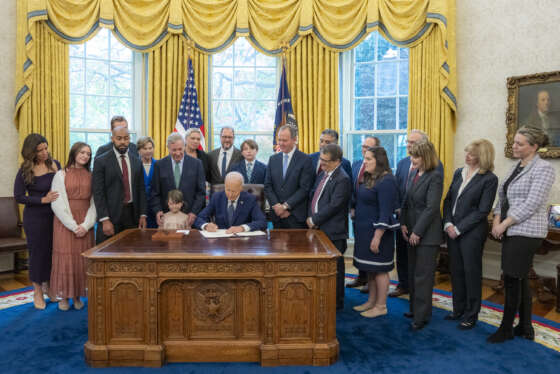Employee unions march on Capitol Hill to stop sequestration
AFGE, AFSCME rally against the potential cuts from sequestration as part of their week-long legislative conference. Union members are meeting with lawmakers to ...
Several hundred federal employees marched on Capitol Hill yesterday protesting potential furloughs and budget cuts to their agencies.
The budget-busting sequestration is scheduled to take effect in less than three weeks, and the American Federation of Government Employees and the American Federal of State, County and Municipal Employees wanted to make sure the impact of those cuts is clear to lawmakers.
The march was part of the week-long campaign by AFGE and AFSCME to stop sequestration and educate members of Congress about the value of federal employees.
While the rally included a host of fiery speeches and the usual rhetoric, more importantly AFGE and AFSCME tried to put a face on what sequestration would do to the federal workforce.
Fewer food inspections
Take Trent Behow. He is a consumer safety inspector for the Agriculture Department’s Food Safety and Inspection Service. Behow works in St. Joseph, Mo., and has worked for FSIS for 22 years.
“There are 6,500 food inspectors like me nationwide on a daily basis ensure that safety of our nation’s meat, poultry and egg products. Eight-five percent of the USDA FSIS annual budget is devoted to salary. The way USDA FSIS intends to cut spending is to send the inspectors home,” he said during the rally on the Senate side of Capitol Hill. “If sequester takes effect, up to 2,100 fewer food inspections could occur, putting families at risk and costing billions in lost food production. The impact would have a ripple effect of epic magnitude. As soon as you take an inspector off the floor, the plant shuts down. Removing inspectors even for a short period would affect several hundreds of thousand workers and would affect the supply of meat, poultry and egg products and consumer prices.”
Behow added FSIS employees could be furloughed a total of 15 days by Oct. 1, and that would cost meat, poultry and egg producers about $10 billion in losses.
Pam Baca is another federal worker who is putting a face and a story around the impact of the sequestration cuts. She works for the Social Security Administration in Colorado.
Baca said cuts to SSA’s budget already have caused the agency to close 47 offices and 300 contact stations around the country. SSA also has reduced the number of hours its offices are open during the week by a total of one day.
She said the sequester would make things much worse.
Sending a broader message to Congress
Paul Ferris is president of AFGE local 2516 and works at the William Beaumont Army Medical Center in El Paso, Texas. He said the march and meetings on Capitol Hill are about sending a bigger message to lawmakers.
“We are meeting the demands and we are taking care of our patients, and they’re putting restraints on us,” he said. “I don’t think they really understand because again, they are about their self interest and not really what happens down at the front levels.”
Ferris said one such restraint is budget cuts that stop the medical center from hiring workers more quickly.
“There are roadblocks when you’re asking about funding or roadblocks about hiring and there are roadblocks here or there and a lot of it is someone’s self interest and not the law,” he said. “It’s a shame the unions have to come in and be proactive, be very aggressive to get management to do the right thing.”
Behow, Baca and Ferris are but a few of the AFGE and AFSCME members fanning out across the House and Senate meeting with lawmakers this week.
Meeting with every lawmaker
J. David Cox, the national president of AFGE, said the two unions will meet with every member of Congress this week to discuss sequestration and explain in more detail its potential impact.
“We are letting them know that we will remember this. And also, we will take that message back home,” Cox said. “We are guarding this country and protecting it against the most dangerous criminals in the world. You want us not to be there? We are guarding the borders. Somebody right now is processing social security claims for our senior citizens and for children in need. Those things are happening and we will not be there doing that. Those things are all affected by the sequestration.”
Cox and others believe the message is starting to get through to lawmakers.
Rep. Chris Van Hollen (D-Md.) attended the rally and has been meeting with AFGE members. He said he thinks the message is starting to sink in.
Cox said he’s seen some good responses from members of Congress so far, but AFGE also will take the message of the impact of sequestration will have to the local level and try to make sure people understand what’s going on.
He said the other issue in helping Congress understand the problems that sequestration would bring is explaining its broader economic impact. AFGE economists estimate the cuts to federal spending would cost 1.5 million jobs beyond the impact on federal employees. Cox said he hopes that will help influence Congress to act more quickly.
Over the next three weeks, federal employees such as Donna Brockington of the Office of Personnel Management, will be watching the dance between Congress and the White House closely.
And Brockington has another message for Congress that is part of AFGE’s efforts this week.
“It’s a lot easier to make the federal employees the scapegoats of the deficit. But we didn’t create it. I know people who buy their own supplies to do their federal jobs,” she said. “We’re not the problem. We are not spending exorbitant amounts of money. It’s time for them to stop blaming us as scapegoats and putting us in the middle of all these fights and debates and take money from us.”
RELATED STORIES:
OMB details widespread furloughs, cuts to agency programs under sequestration
SSA to close offices earlier, to cut overtime
Unions, industry groups spar over impact of sequestration
Copyright © 2024 Federal News Network. All rights reserved. This website is not intended for users located within the European Economic Area.
Jason Miller is executive editor of Federal News Network and directs news coverage on the people, policy and programs of the federal government.
Follow @jmillerWFED








